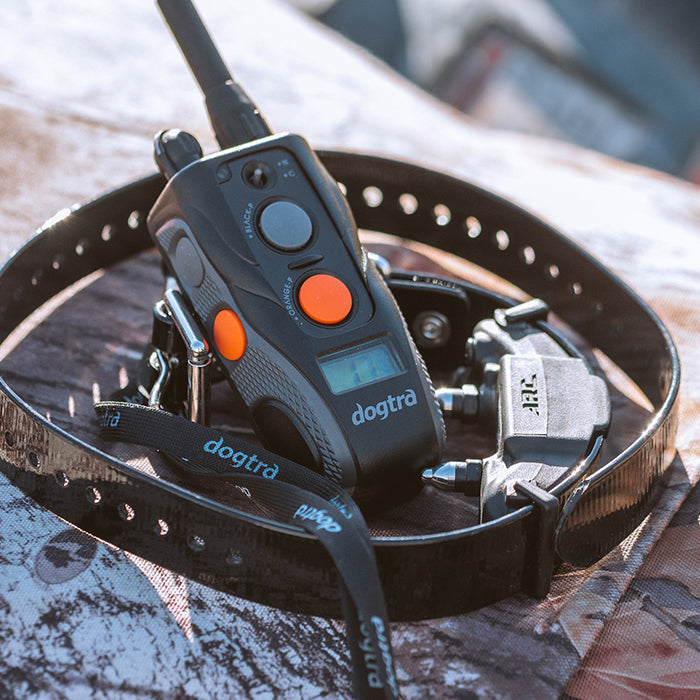DON'T KNOW WHAT STIMULATION LEVEL TO USE? LET YOUR DOG TELL YOU.

“Unless you try to do something beyond what you have already mastered, you will never grow.”
I’ve always liked this Ralph Waldo Emerson quote. It reminds me to move through hesitancy, and overcome awkwardness when I’m attempting to learn something new. Continually expanding my comfort zone has been one of the rules of conduct I set for myself. I try not to get too comfortable for too long because I believe it can lead to complacency.
Unfortunately, I sometimes see complacency with pet owners and how they live with their dogs. Not that they become smug about their dog’s overall behavior, but rather, they settle for far less than what is possible. And settling for less than what is possible denies both the owner and the dog from living a life of joy and adventure together.
Pushing beyond the comfort zone is something I routinely ask my clients to do. I want them to experience success taking their dog into places and situations that they may have believed impossible. Once success becomes the new norm, the joy and reward of those adventures beyond the back yard will be immeasurable!
More often than not, that level of success is achieved because I’ve helped my clients through the hesitation and initial awkwardness of learning to use a remote training collar.
Learning to train a dog means acquiring new knowledge and it is no different when learning to use a remote collar. In my experience, most of the hesitancy has to do with understanding when and how much to adjust the stimulation dial.
In order to make it as simple as possible, I remind people that there are really only three stimulation levels to concern themselves with. The numbers on the dial don’t matter other than to serve as a reference point, because in reality the setting being used is either: too low, too high, or just right.
Those three stimulation levels are indicated by the dog and every dog is different. Some dogs are very sensitive to the sensation and some are more impervious. This is why I also continually remind people to keep their eyes on the dog. The dog determines whether or not the level needs to be adjusted.
Those two key points are critical and worth summarizing so let me repeat:
Stimulation levels are indicated by the dog therefore you must keep your eyes on the dog to know what level is appropriate.
When you keep your eyes on the dog you will be able to observe the body language that helps you determine the difference between too low, too high or a just right setting.
The thought process behind too low, too high or just right is similar to how we might adjust the volume on our television or radio. In order to easily pay attention or clearly “hear” the broadcast we learn to calibrate the level according to the distractions in our environment.
The same is true when using a remote collar, the only difference being that we are adjusting tactile stimulation rather than auditory. Tactile information tends to be far more effective for gaining attention and thus why remote collars work so well at gaining attention when a dog is distracted.
When your eyes are focused on the dog, rather than the transmitter you will notice body language indicates if your dog is influenced by the sensation or not. You are watching your dog for a shift in attention and behavior.
So, if the dog continues on with no noticeable change to the behavior they were already participating in, then the level is too low. For instance; if you’re working on teaching recall and the dog continues sniffing the grass or meandering at the end of the long line, even though you are applying e-collar stimulation, then it is time to turn the dial up a bit.
Conversely, if the dog becomes agitated, frantic, frozen or yelps, then your level is too high and you need to turn the level down. Overwhelming will not teach a dog to behave more appropriately, so don’t be one of those people that consider the e-collar the biggest hammer in the tool box. Intentionally working at too high of a stimulation level isn’t training, it’s bullying and it won’t help enhance the relationship with the dog.
Using a level that is just right will get the dog’s attention without being overly concerning. It will cause the sniffing dog to lift his head from the grass. It will interrupt barking, causing him to quiet, look quizzically around, stop jumping and pause his behavior momentarily, so you can reward when all paws are touching the ground.
With practice and training time, every dog will eventually fall into a “working range”. A working range translates into a series of numbers that work for the dog when the situation changes from minimal distraction to high distraction. There will not be a single, magic number on the dial that will always be perfect for every situation and that is what I want to emphasize for those of you that have been hesitant to try remote collar training because it isn’t in your comfort zone yet.
Learning the distinction between too low, too high, and just right has helped many dog owners expand their comfort zone. They conquered the apprehension of training with a remote collar and now enjoy many more adventures with their dog!




